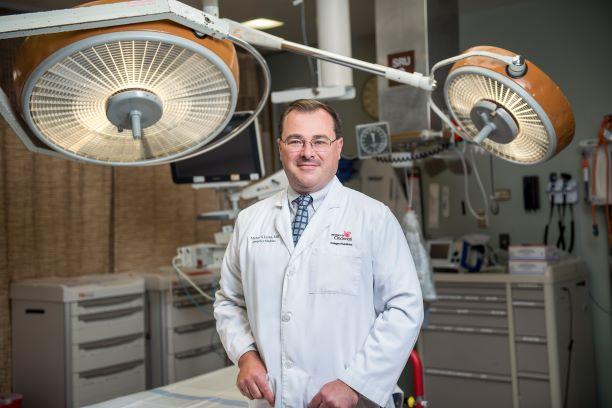Emergency medicine study calls for expansion of patient testing

Credit: Colleen Kelley/UC Creative + Brand
Newly published research shows that a screening program in the University of Cincinnati Medical Center Emergency Department helped detect an outbreak of HIV among persons who inject drugs in Hamilton County, Ohio, from 2014-18.
The study was published in PLOS ONE.
The results of the study highlight UC contributions to public health surveillance as yet another reason why emergency departments should be screening for undiagnosed HIV infections, according to Michael Lyons, MD, associate professor in the Department of Emergency Medicine at the UC College of Medicine.
“The importance of emergency department screening has been established for over 20 years,” says Lyons. “Diagnosing people as early as possible allows for changes in behavior to stop spreading the illness and treatment that improves their health and makes them much less infectious to others.”
Since 2015, an increasing number of HIV outbreaks among those who inject drugs have been reported in the United States. The study found this single testing site contributed 20% of new HIV diagnoses regionally during a period of rapidly increasing HIV infection in that group.
An Early Intervention Program (EIP) was founded at UC in 1998, the first program of its kind in the country. The EIP offers HIV intervention/prevention counseling, testing, linkage to care and many other services to assist individuals.
“Everyone understands that early diagnosis of HIV is critical for individuals and public health,” says Lyons. “Everyone knows that when you screen, that data goes into surveillance systems. This study highlights that a contribution to surveillance is an important public health outcome. In this case, it helped public health authorities to identify a serious HIV outbreak and trigger a Centers for Disease Control and Prevention investigation and response planning. That’s not to say that we solved this public health problem, but your chances of helping are a lot better if you know about the crisis than if you don’t.”
The screening is done through a blood test or an oral swab. The blood test method is the most common, and the sample is sent to the lab, with results returned typically in 90 minutes. If the patient has been discharged, the emergency staff follows up with them later. The health department is notified of all positive results for surveillance and to facilitate partner counseling and referral services.
Lyons says the screening program at UC follows a few different program models. They have publicly funded health promotion advocates who are adjunct health care workers in the department who help with screening. There are also integrated screening workflows in the electronic health record where the nurses and providers are prompted to order testing as well.
Lyons and the other researchers would like to see this study have an impact on public health policy as well as the frequency of HIV screening in emergency departments across the country.
“I hope that public health and policymakers continue to realize that understanding disease epidemiology through surveillance data is essential for fighting infectious disease and that emergency department data is very important to those surveillance efforts,” says Lyons. “I also hope that emergency departments are even more motivated to expand HIV screening given their role in monitoring trends in epidemiology that guide public health response.”
Study authors included representatives from the Centers for Disease Control and Prevention, the Ohio Department of Health and Hamilton County Public Health.
###
Media Contact
Bill Bangert
[email protected]
Original Source
https:/
Related Journal Article
http://dx.




